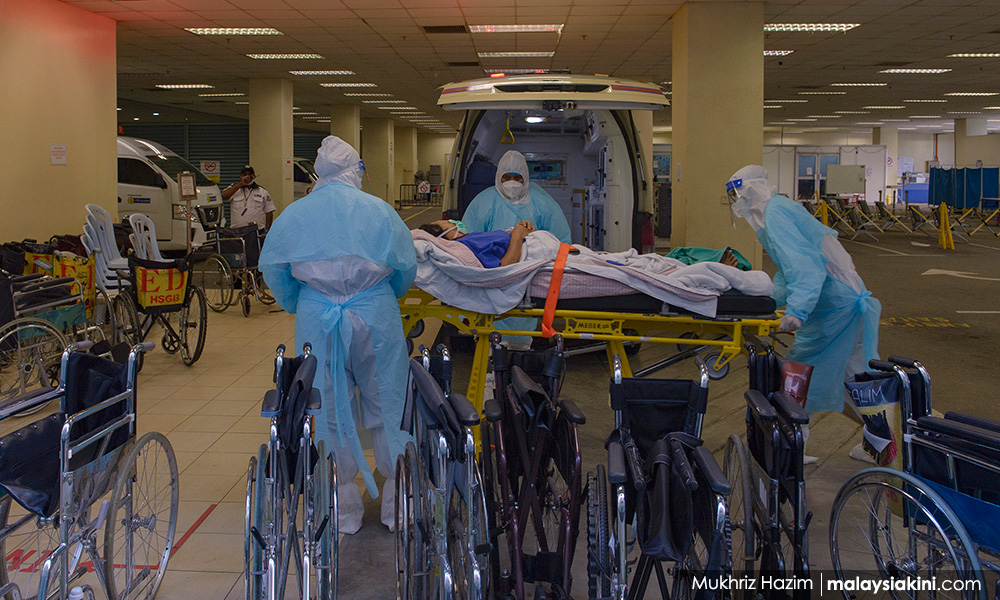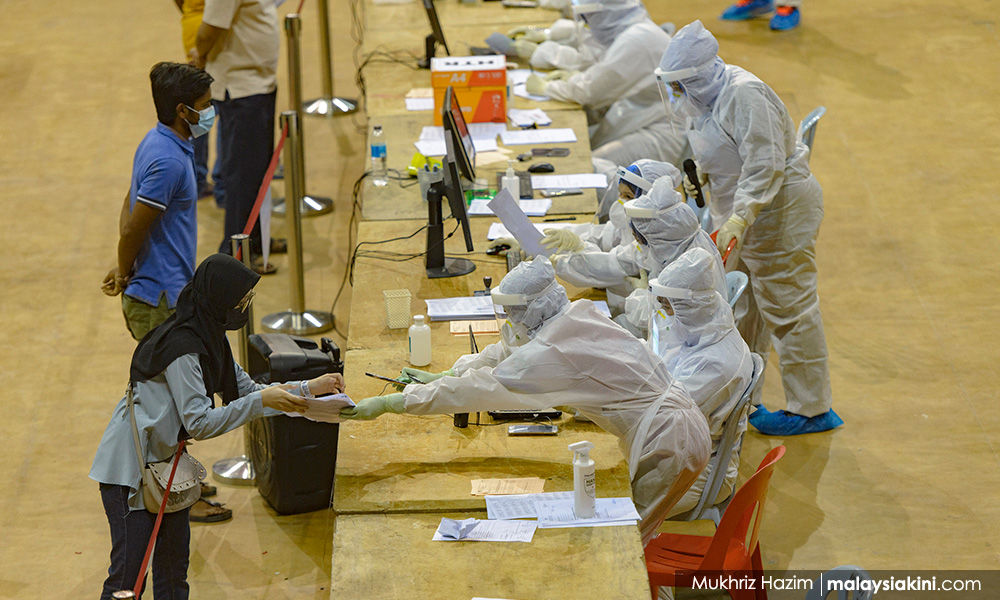LETTER | An expert has given warning of an “impending, massive fifth wave” driven by an inevitable loosening of the lockdown due to socioeconomic desperation and the Delta variant.
Despite the lockdown as currently implemented for nearly a month, hospital and intensive care unit capacity remain stretched. Daily case numbers are a less meaningful indicator given high positivity rates.
Said differently, despite this “full” lockdown and before full exposure to the increased infectivity of the Delta variant, our pandemic management is wanting.
Are there other options? Is there any hope for us if and when the Delta becomes widespread, when families, health workers, and businesses are exhausted after a prolonged lockdown? Is Malaysia headed towards the worst option of “prolonged suppression followed by giving up”, described 14-months ago in my earlier article, written to explain the insights of lockdown scenario modeling done with Dr Dhesi Raja?
In this brief article, I explain the relationship between testing, Covid-19 cases, and lockdowns.
How does increased testing reduce Covid-19 cases?
Surely, if testing is increased, Covid-19 cases will increase? How can increased testing possibly reduce the number of cases? Please allow me to explain.
The spread of Covid-19 is related to four key yet modifiable variables.
The first is the activity rate, which is the number of daily encounters during which a person can pass Covid-19 to another person. Lockdowns reduce the activity rate - the tighter the lockdown, the lower the activity rate, and the less chance that Covid-19 has to spread.
The second is the infectivity rate (not to be confused with the reproductive rate). This is the chance of spreading for each of these encounters. Wearing face masks, physical distancing, and improving ventilation reduce this chance.
The third is the proportion of susceptible persons encountered by an infectious person. We are susceptible to Covid-19 if we are not immune. We become immune either through natural infection or, hopefully, vaccination. Herd immunity means the proportion of susceptible persons is so low that, even with our usual non-lockdown activity rate and non-masking behaviour, one infected person infects fewer than one other person - and the outbreak fizzles out on its own.
The fourth is the number of days an infectious person spends in the community going about their usual activities. The longer an infectious person spends outside of isolation or hospital, the more numerous the encounters with others, and the greater the cumulative chance that these encounters would result in spread.
This is how finding, testing, tracing, isolating, and supporting (FTTIS) infectious cases, even those without symptoms, helps with reducing spread. We reduce the infectious duration by increased testing accompanied by rapid contact tracing and isolation. And by reducing the infectious duration, we reduce spread and Covid-19 cases.
Test perfection, in terms of sensitivity and specificity, is a second-order consideration. Time is of the essence - any delays in testing, obtaining test results, or acting on these results renders this intervention less useful. Similarly, testing alone without acting on results is also meaningless.
Note that when we increase testing, the apparent number of confirmed cases will rise. Here’s an analogy: If one finds an ant’s colony in a stump of wood, there may only be a few ants crawling on the outside. But open it up, and you find many more ants who were always there but unseen. You can eliminate ants that you see more effectively. But if you open it up and do nothing, you are wasting time and resources.
These four variables are crucial but not the only parameters that determine the dynamics of an outbreak, but there is no space here to, for example, discuss network effects.
What is the link between testing and lockdowns?
The four variables mentioned above work in tandem. For the mathematically inclined, the variables are multiplied by each other. Half the infectious duration but double the activity rate, and the impact on the spread is unchanged. Said differently, by reducing the infectious duration (i.e., by strengthening FTTIS) and by reducing the infectivity rate (e.g., by double masking), we can reduce our dependence on reducing the activity rate (i.e., by enacting tight lockdowns).
Testing in this context is not primarily to improve data collection or the accuracy of the threshold of confirmed cases used to decide when a lockdown needs to be tightened or loosened. Neither is it primarily to identify individuals in need of treatment. Rather, testing in this context reduces our reliance on a lockdown if coupled with rapid automated contact tracing and isolation, by reducing the duration of infectivity.
Is the current FTTIS already adequate? Trust your eyes. Significant numbers of cases brought-in-dead, increasing case fatality rates, high test positivity rates, and a high proportion of sporadic cases are indications that the current system and processes are inadequate. Frontline staff are our heroes and are doing their best, but the magnitude of the work requires automation, not paperwork, phone calls, or bureaucracy.
Full complement of public health needed to save lives in coming weeks
Lockdowns can powerfully prevent healthcare capacity from being overwhelmed and “buy” precious time to strengthen other interventions. But lockdowns are harmful to both livelihoods and lives (suicides in the short term, disrupted chronic disease management, and lost educational opportunities)
A lockdown, even an absolute lockdown for two weeks, will not “end” the pandemic. In addition, the Delta variant increases the infectivity rate and likely increases the proportion of those susceptible as vaccines are rendered less effective. Hence, without the full complement of public health tools such as FTTIS, a lockdown alone would be underpowered to mitigate the “fifth wave”. Malaysia must use all public health tools and use them with skill and care - not rely solely on lockdowns.
Yes, there is a light at the end of the tunnel. We are assured, with the many caveats on vaccine supply, acceptance, and adequate capacity, that a large proportion of our country will be vaccinated within months, bringing us to herd immunity. But, as exemplified by India, considerable harm to both lives and livelihoods can still occur in these intervening weeks.
We have only precious little time to prepare to avoid this. Given the socioeconomic desperation evident - I am confident I am not the only one receiving tragic and disturbing videos and pictures of suicides on social media - our government must immediately use the full complement of public health tools effectively to meet international benchmarks for pandemic management, in addition to improving the “smartness” of the current lockdown.
DR YAP WEI AUN is a health systems specialist.
The views expressed here are those of the author/contributor and do not necessarily represent the views of Malaysiakini.




